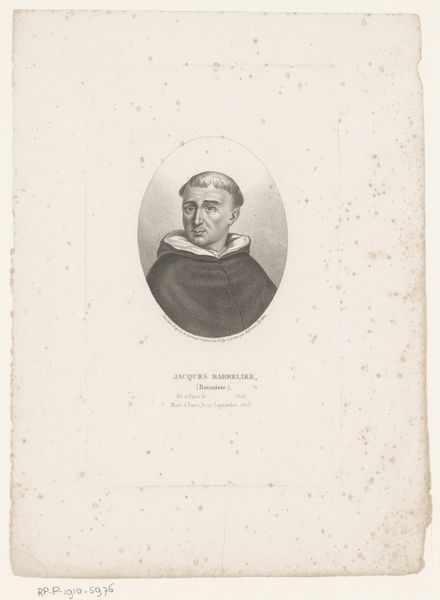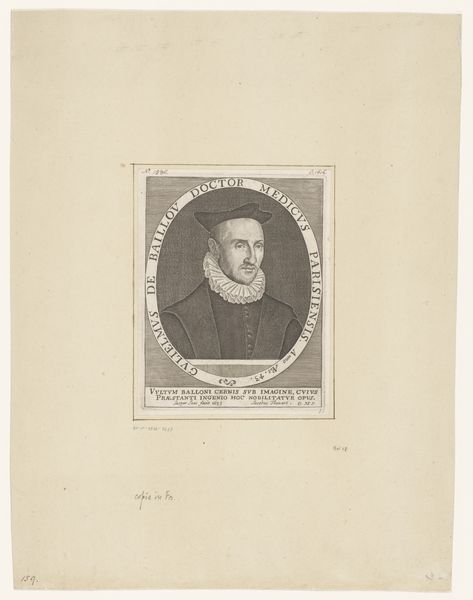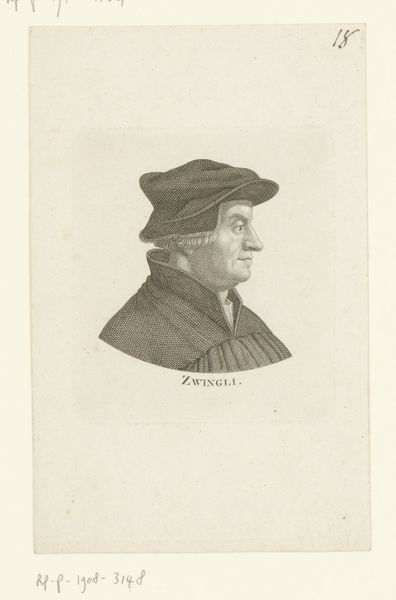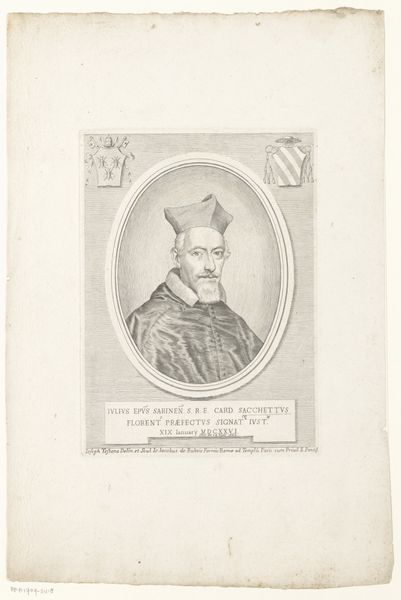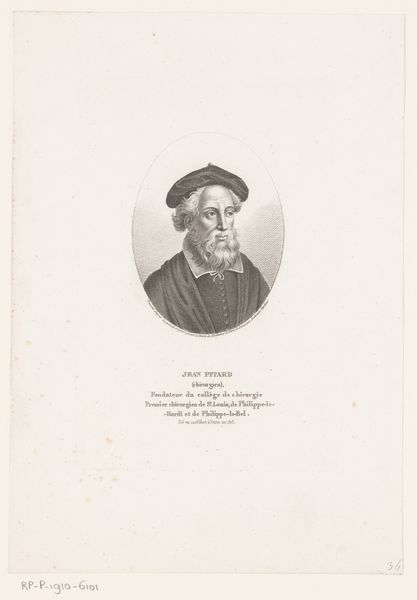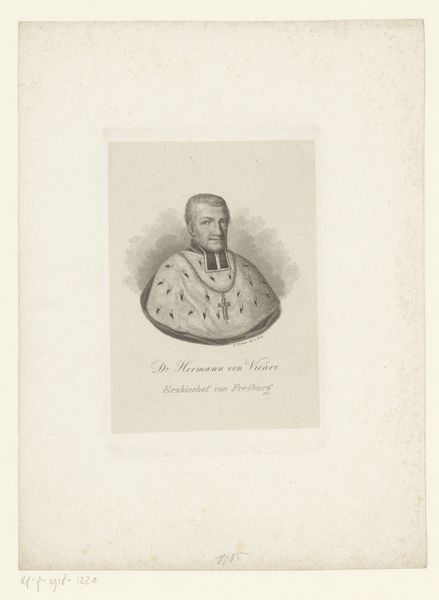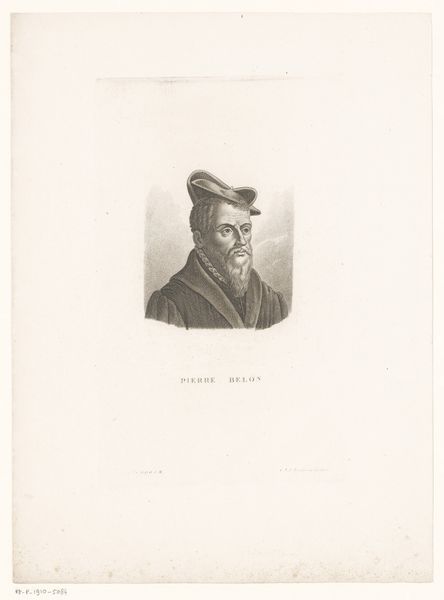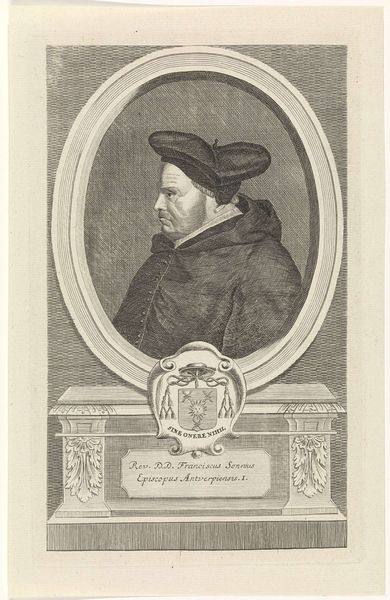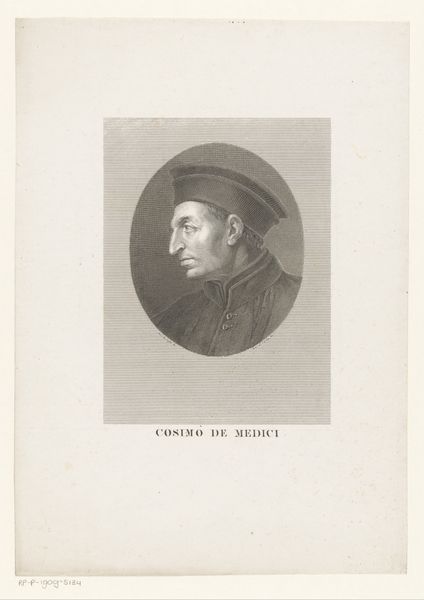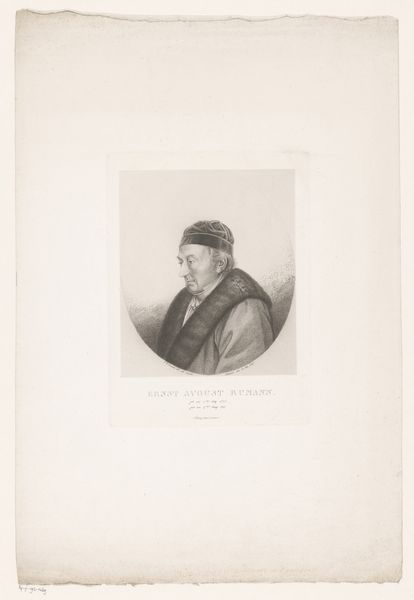
print, engraving
#
portrait
# print
#
history-painting
#
academic-art
#
engraving
#
realism
Dimensions: height 419 mm, width 328 mm
Copyright: Rijks Museum: Open Domain
This portrait of theologian Angelo Bigoni was made by Giuseppe Elena in the 19th century, using engraving. As a method, engraving requires a high degree of skill, and the mastery of specialist tools, to create an image by cutting lines into a metal plate, which is then inked and printed onto paper. The marks on the paper give a tactile quality to the image, emphasizing the smooth planes of Bigoni's face and the heavy folds of his cloak. This printmaking technique was highly esteemed during this period, seen as a means of reproducing images accurately and efficiently. The choice of engraving speaks to the subject’s status and the value placed on disseminating his image. The repetitive action of carving lines into the metal plate also draws our attention to the labor involved in its production. Considering this portrait, it is clear that the material and process not only shape the aesthetic qualities of the work, but also contribute to its cultural and social significance.
Comments
No comments
Be the first to comment and join the conversation on the ultimate creative platform.
